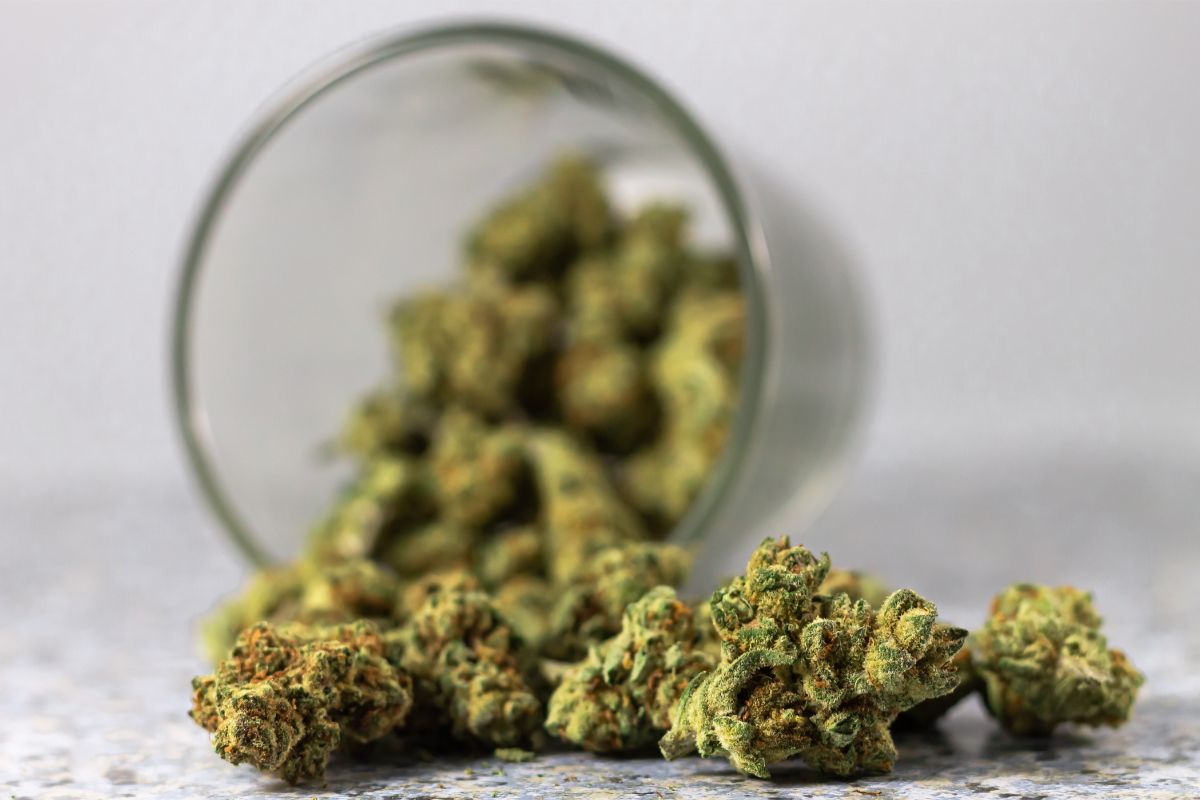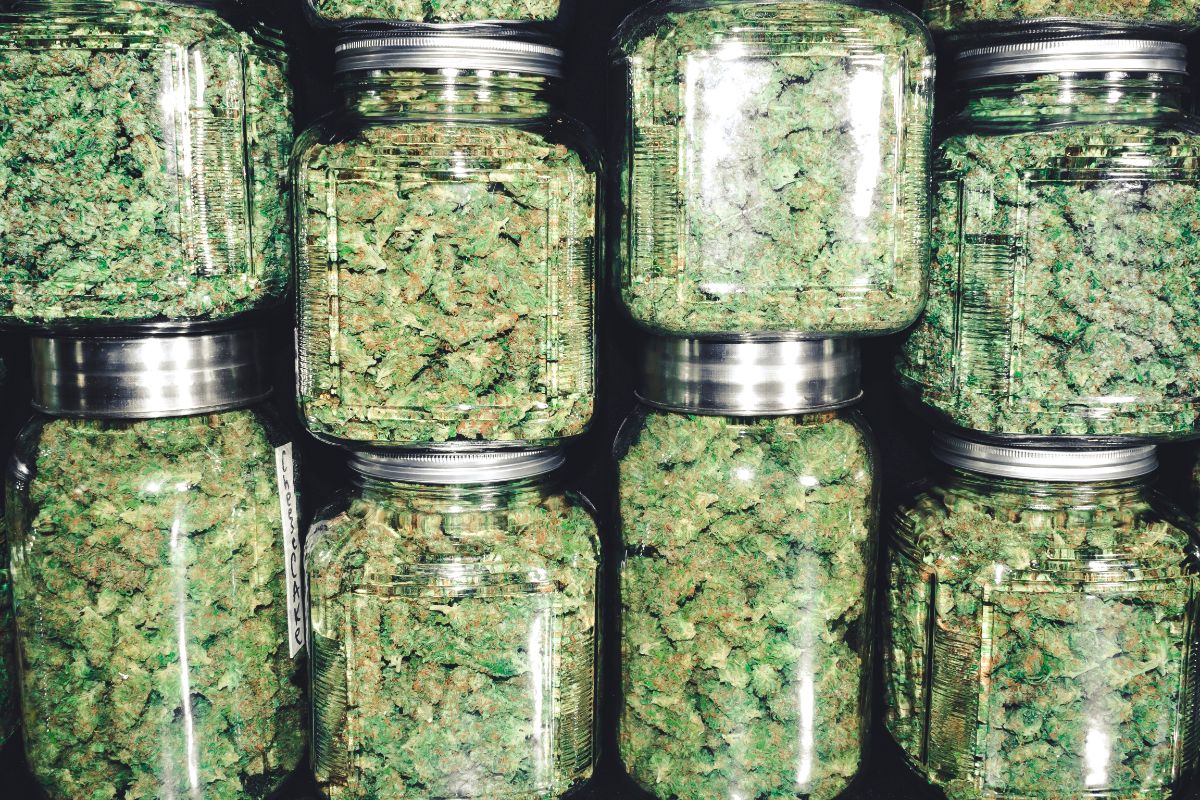We occasionally recommend products we love and might be paid a share of the sale.
If you want the best yield out of your cannabis plants, then you need to provide them with all of the necessary nutrients. If the plants are lacking in nutrients, then you will not get a satisfactory yield.
However, this does not mean you constantly provide your plants with everything that they need. If you do this, then you end up overfeeding your plants and the results won’t be great, either.
The key here is finding a balance. There are many variables that come into play when you are trying to provide a balance of nutrients to your cannabis plants.
However, we are here to help! In this article, we will discuss all you need to know about cannabis plants and their necessary nutrients. So, if you’re interested, read on for more!
How Often Should I Give My Plants Nutrients?
While you are working out the feeding schedule for your plants, it is important to note that the medium you use to grow the plants will change when they need to be fed.
To put it simply, different growing mediums will have different moisture retention and nutrient levels. Let’s check these out in more detail below.
Cannabis Plant Nutrients: Soil-Based Growth
Growing cannabis plants in soil is often considered to be the most traditional method of growing cannabis. These days, it is widely accepted that growing cannabis in soil will not result in the best weed.
However, soil-based growth means you can feed your cannabis plants less, and this is especially true if you choose the correct soil for your cannabis plants.
However, many people find that growing your cannabis in soil is not efficient. This is because when you water the cannabis plants, a lot of the nutrients get washed away.
Not only that, but the plants are more likely to suffer from diseases in the soil. This is particularly true of cannabis grown in soil outdoors, as opposed to indoors.
Cannabis Plant Nutrients: Growth Without Soil
In contrast to growing your cannabis plants in soil, growing them without soil is very efficient, particularly because you do not need to be concerned about diseases that come from the soil. A popular form of soilless growth is hydroponic growth.
The hydroponic growth method is a form of growing plants in an aquatic-based environment. Examples include a drip irrigation system or a deep water culture system.
With this method of growing cannabis plants, you can maximize your yield by funneling the correct amount of nutrients into the plants every time they are fed.
However, the hydroponic method does have its disadvantages. Unlike soil, the hydroponic method provides the cannabis plants with no extra nutrients, so you will need to provide them with nutrients yourself on a daily basis.
What Factors Impact Feeding Nutrients To Cannabis Plants?
There are three impactful factors when it comes to how much nutrients they need and how often they need to be fed. They are soil mediums, the plant stage of growth, and the type of fertilizer you use. Let’s check these factors out in more detail.
Cannabis Plants: The Growth Medium
As previously mentioned, cannabis can be grown with various mediums. You can choose between soil, coco coir, or sphagnum moss.
When you choose soil to grow your cannabis plants, they will need less feeding since they will get nutrients from the soil. However, you need to ensure the soil is the correct pH or the plants could experience nutrient lockout (we explain this below!)
Alternatively, you can choose a soilless growth medium, such as coco coir, for your cannabis plants.
These mediums are often combined with a hydroponics system to ensure the plant does not dry out. However, plants grown with this medium will need to be fed on a regular basis.
Cannabis Plants: The Seedling Growth Stage
During the seedling stage, your cannabis plants do not need a lot of nutrients because they will get most of their nutrients through their leaves. All they need at this stage is a warm environment so they can establish a root system.
Cannabis Plants: The Vegetation Stage
During the vegetation stage of growing cannabis plants, you can start to give them small amounts of nutrients. When cannabis plants have around three to four leaves, they have entered the vegetation stage.
A great fertilizer to use here is an NPK, veg fertilizer that is high in nitrogen and has a 2:1:” ratio. In the middle of this stage, increase this fertilizer ratio to 10:5:7, until the last week of the vegetation stage, when you will change the fertilizer ratio to 7:7:7.
Cannabis Plants: The Flowering Stage
When your plants enter their flowering stage, the fertilizer nutrients ratio will need to change again.
It is also best to change the type of fertilizer you are using at this stage, to a bloom fertilizer high in phosphorus and potassium, to ensure they thrive and grow.
When your plants are flowering, you need to increase the types of nutrients that you give to them.
Cannabis Plants: Organic Fertilizers
Organic fertilizers are very cost-effective and abundant. You can choose to buy natural fertilizers but you can also make them yourself following step-by-step instructions.
Creating your own fertilizer will help you to save money, and you get to avoid the chemical aftertaste that you get with some fertilizers.
However, it can be difficult to gauge how much nutrients your plant needs, and it will take a lot more time to break down the nutrients for your plant to absorb them.
Cannabis Plants: Inorganic Fertilizers
Inorganic fertilizers have the correct NPK ratios with the required amounts of macro and micronutrients.
This makes them very appealing because you will know exactly how and when to apply the fertilizer to your plants so you have maximum yield.
However, sometimes you are left with cannabis that has a chemical aftertaste, which can be very unpleasant.
Should I Give my Plants Nutrients When I Give Them Water?
You should give your plants nutrients when you water them, but you do not necessarily need to do it every time you water them. It all depends on what you choose to feed them – and there are many different kinds of fertilizers out there!
The good news is that all kinds of fertilizer brands will have a nutrient chart to inform you of how often you should feed your plants.
How Often Should I Add Nutrients During The Flowering Stage?
It can be difficult to know how much nutrients your cannabis plant will need during the flowering stage.
Many fertilizers only require you to feed the plants once a week, but this can differ greatly depending on the fertilizer. Again, it is best to check the nutrient chart on the fertilizer brand.
What Is A Feeding Schedule?
A feeding schedule is a type of chart often seen on fertilizers that informs you when and what nutrients to give to your plants to help them grow and maximize their yield.
Feeding charts typically come in the form of spreadsheets with columns that indicate the weeks of the plant growth stage, and vertical columns that represent the nutrients your plant needs during those weeks.
On top of that, nutrient charts have intersections that detail the exact amount of nutrients that need to be diluted in water to give your plants food.
It is important to note that you may need to use a TDS meter to measure the amount of nutrients present in your water solution before you feed it to your plants.
Trust us when we say how important this is! Without following this step, you will not know whether you are underfeeding or overfeeding your plants.
How To Tell if Your Plants Are Experiencing Problems With Their Nutrients
Sometimes, you may make some small mistakes that result in your cannabis plants experiencing problems with their nutrients.
The best way to check this is to inspect their leaves, as leaves are usually the biggest indicator of nutrient-related problems.
However, these problems can come up in a variety of different ways. Let’s check out some examples below!
Cannabis Plants: Nutrient Burn
Nutrient burn happens when you apply too much fertilizer which overfeeds the plants and makes the nutrients ineffective. You can tell when a plant is experiencing nutrients burn by its leaves.
Typically, its leaves will become brown or yellow with curled tips, giving them the appearance of being burned (which is how “nutrient burn” got its name!)
You can fix nutrient burn by flushing the cannabis plants with water. This will remove the excess nutrients and allow the plants to recover and thrive.
Cannabis Plants: Nutrient Deficiency
Unfortunately, nutrient deficiencies can happen even when you are giving your cannabis plants the necessary nutrients to thrive. This mostly happens in soil-grown cannabis plants and is because the pH levels of the soil are too high for the plant.
Cannabis Plants: Nutrient Lockout
Nutrient lockout happens when there is a chemical reaction between your plant, the growing medium you have chosen, and the nutrient solution.
When nutrient lockout happens, your cannabis plants will stop being able to absorb the necessary nutrients and will grow slowly. Nutrient lockout happens most often when people use fertilizers that are high in salt.
So, ensure you check the salt content on the fertilizer before you buy it to ensure nutrient lockout does not happen to your cannabis plants.
Final Thoughts
If you want to grow amazing cannabis plants with maximum yield, then you will need to ensure you are giving them the correct amount of nutrients. The number of nutrients your cannabis plant will need will vary on a variety of factors.
To start, the nutrients you will give your plants depend on how you are growing them, in soil, without soil, etc.
After this, you need to give your plants a different amount of nutrients based on where they are in their growing stage and based on what type of fertilizer you are using.
If you are using an inorganic fertilizer or store-bought organic fertilizer, then you will find a feeding schedule on the packaging which will detail when and how often to feed your cannabis plants.
We wish you the best of luck with growing your plants and hope your yield is abundant!
I’m an avid gardener and cannabis enthusiast. You can usually find me in my garden caring for my plants or at my computer crafting helpful blogs for my readers.
Contents



